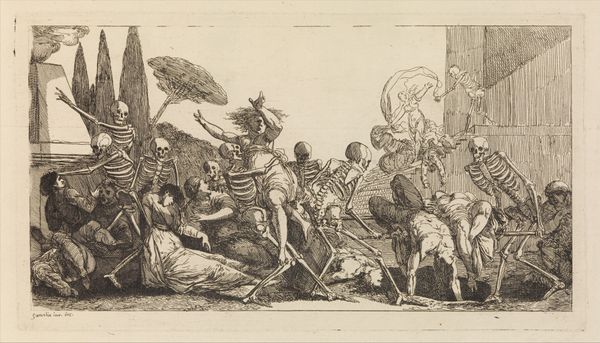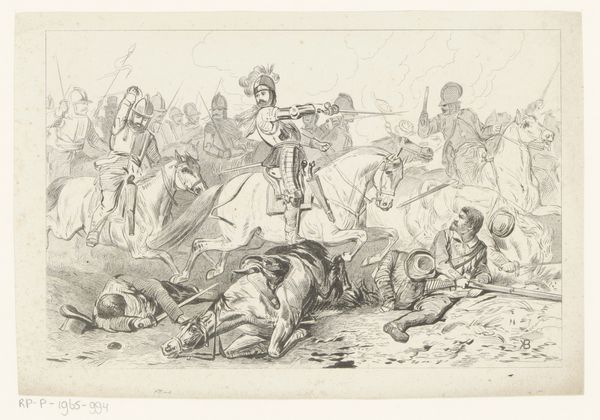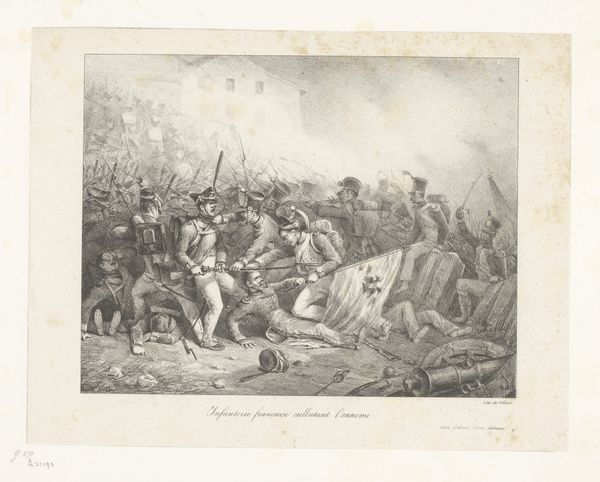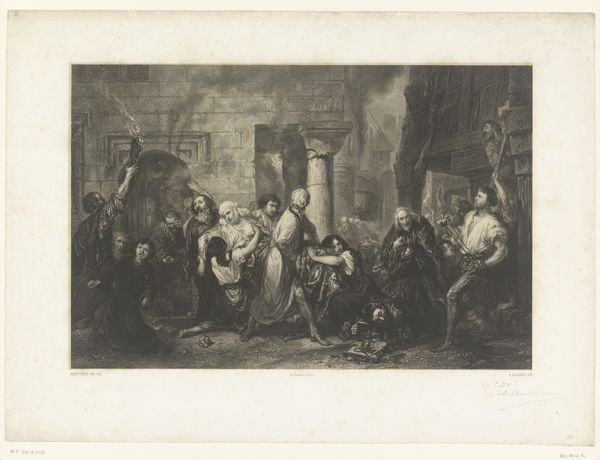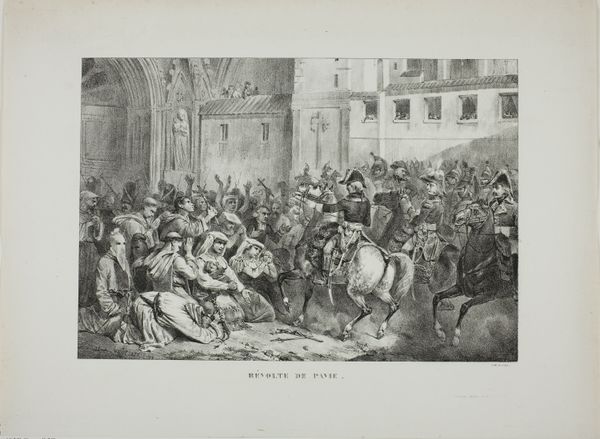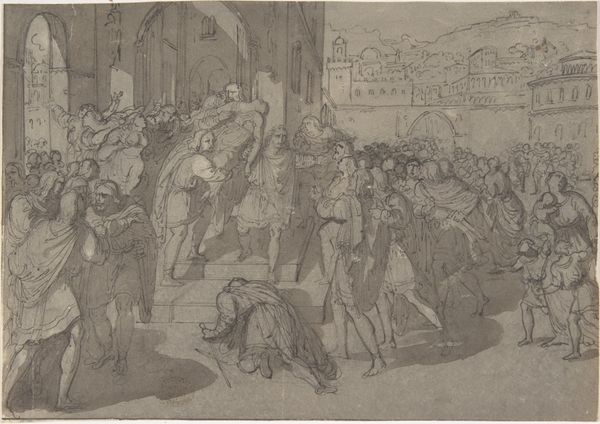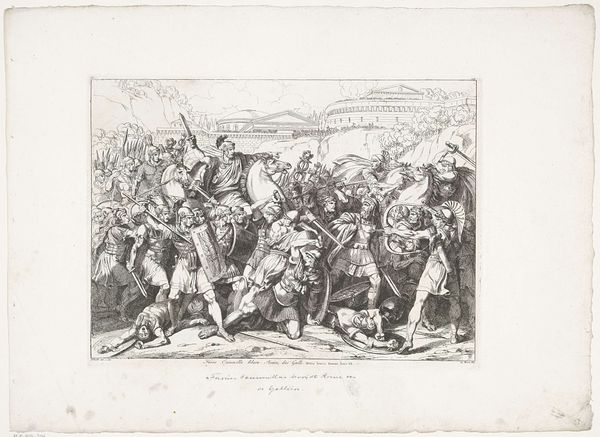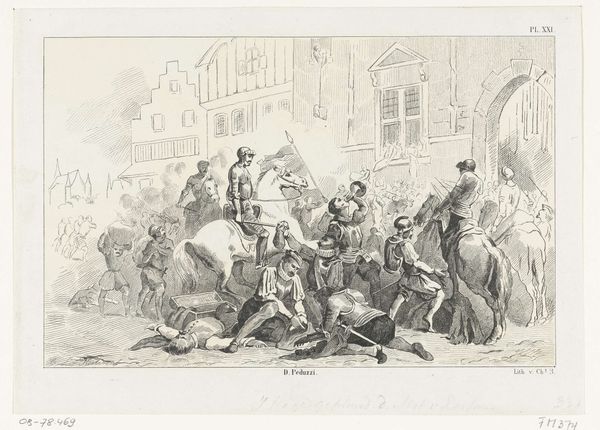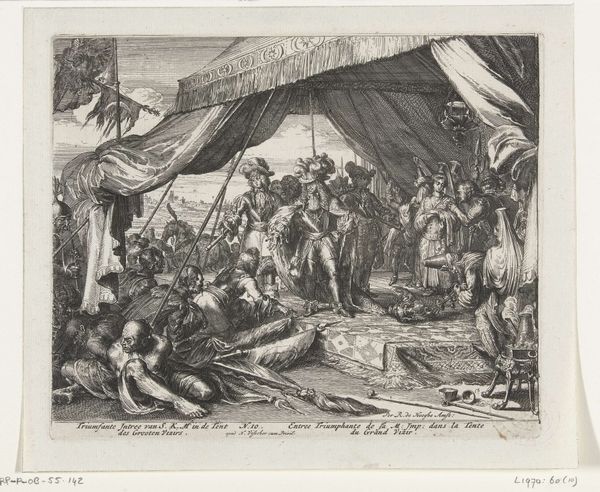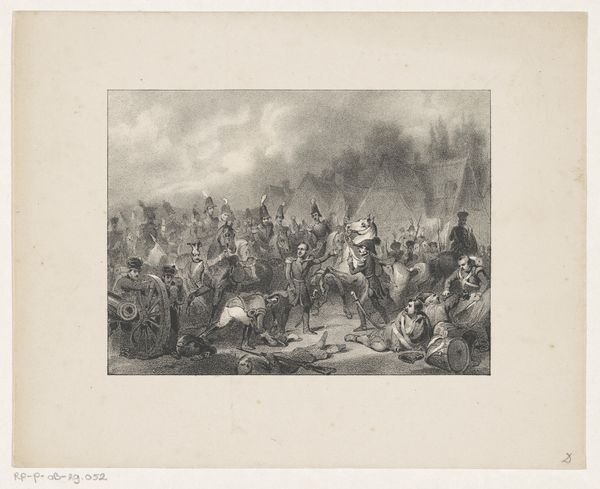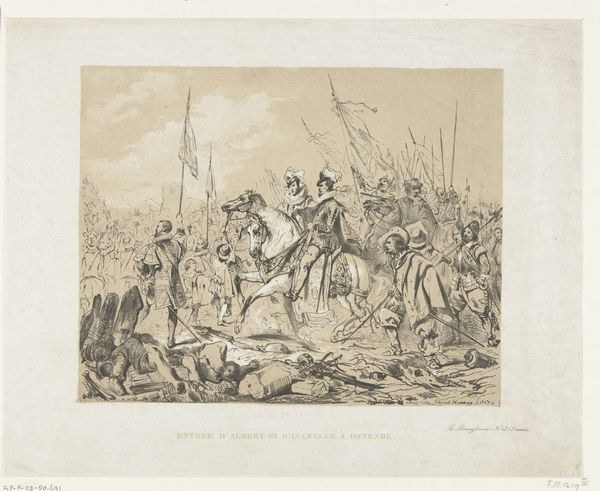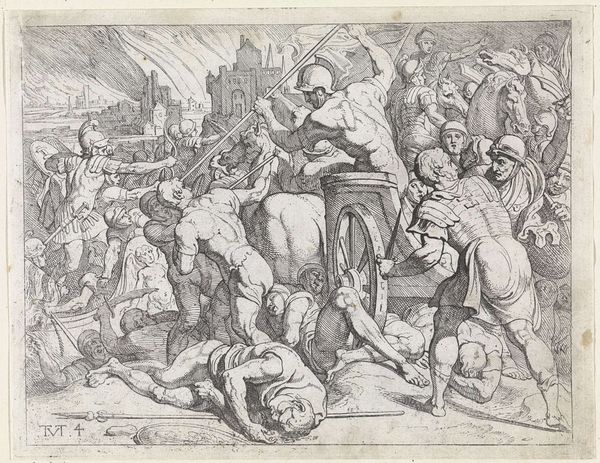
Jacoba van Beieren stelt zich aan het hoofd van de Hoeken, ca. 1430 1853 - 1855
0:00
0:00
Dimensions: height 163 mm, width 232 mm
Copyright: Rijks Museum: Open Domain
Curator: Here we have "Jacoba van Beieren stelt zich aan het hoofd van de Hoeken, ca. 1430," an engraving created between 1853 and 1855. The printmaker was Jan van der Veen. Editor: The energy is immediately palpable. Look at the dynamic composition – the chaotic arrangement of figures, the fallen knight, the proud queen, everything is set up in contrast. It creates this exciting visual experience, doesn't it? Curator: It does indeed. What strikes me is how this relatively late piece reflects a desire to capture the visual style and the spirit of an earlier period. Think medieval narrative art, baroque dynamism… but rendered in printmaking, intended for wide dissemination and influencing the contemporary, 19th-century view of this historical moment. Editor: I notice that. See how the stark black and white intensifies the emotional narrative of the queen versus the turmoil beneath. This piece seems intensely designed to manipulate the viewer’s allegiances. What historical perspective should we consider? Curator: The scene depicts Jacoba of Bavaria leading the Hook party in the 15th-century Hook and Cod wars. It’s an event rife with political meaning, of course. The print elevates her as a leader, perhaps suggesting certain attributes about gender roles in the period, given the piece’s historical context. Editor: Note the texture achieved through the engraving. This piece plays with surface versus depth, as shown in the complex lines making up the architecture, people, and landscape. This, mixed with shadow play and light versus dark, draws the eye where it should be for the tale to emerge. Curator: Absolutely, the line work conveys a sense of drama, almost like a stage play. You could also observe how its distribution via print culture impacts how widely the interpretation of that moment—of female authority and leadership—might have spread. Editor: The overall impact here results in something powerful—this idea of asserting and documenting influence, literally pressing history. The medium definitely enriches the meaning of the depiction. Curator: Yes, a singular historical portrayal made permanent—an emblem. And, for me, also evidence of how print media enables social commentary through potent aesthetic choices.
Comments
No comments
Be the first to comment and join the conversation on the ultimate creative platform.
